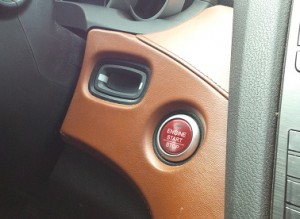 Most Americans rely on their cars for nearly every part of their life—to commute to work, to attend school, to run errands, to socialize with friends or to get away on vacation. AAA recognizes one of the most stressful things that can happen to a driver is to suddenly have their car breakdown/
Most Americans rely on their cars for nearly every part of their life—to commute to work, to attend school, to run errands, to socialize with friends or to get away on vacation. AAA recognizes one of the most stressful things that can happen to a driver is to suddenly have their car breakdown/
“Whether sitting in your driveway or stranded on the roadside, having a car that won’t start is a nerve-racking experience. There are a few things to remember that can help keep you safe and possibly get you back on the go more quickly,” said Tracy Noble, spokesperson for AAA Mid-Atlantic.
What If It Suddenly Won’t Start?
If a car previously was running well and suddenly will not start, it could be an issue with the vehicle’s battery. While in many cases it may have become discharged, in others it’s possible the cause of the problem is a poor connection that can easily be fixed.
Open the hood and inspect the battery. Make sure it is securely mounted in place, then check the cable clamps connected to the battery. If they are loose or covered in corrosive build up, that could be the source of the problem. Clean any corrosion from the battery terminals and cable clamps, and ensure the clamps are tight enough that they will not move.
If a poor battery connection does not seem to be the problem, check a few other basic items such as ensuring the vehicle (if an automatic transmission) is fully in park. Also, make sure there is fuel in the car.
If those items do not seem to be the source of the problem, call AAA or a road service provider that has knowledgeable technicians to assist. As the nation’s largest motor club, AAA trains its roadside technicians to diagnose common vehicle problems onsite, as a result, they are able to get three out of five cars on the go, eliminating the need for a tow.
What If It Strands Me On A Roadway?
“If a vehicle begins to experience problems while being driven or suddenly can no longer be driven, safety should become the driver’s first priority,” said Noble.
If the car is clearly experiencing a problem but can still be driven a short distance, drive to a safe location such as a parking lot. If the vehicle stops running but still has coasting momentum, guide it to the far right shoulder, as far off the road as possible while remaining on level ground. Turn on the emergency flashers to alert other motorists.
If the car cannot get completely off the roadway, switch on the emergency flashers and consider leaving the vehicle and moving to a safer location. Occupants should not remain in a vehicle if there is a possibility it may be struck from behind by other traffic. For the same reason, it is generally not a good idea to attempt to push the car off the road.
Drivers and passengers should exit a broken down car on the side away from traffic if at all possible. Use extreme caution and watch for oncoming vehicles, especially at night or in bad weather when visibility is limited. While waiting for help, never stand directly behind or in front of the disabled vehicle.
In addition to turning on a vehicle’s emergency flashers, drivers can signal other motorists that they have a problem by raising the car hood, tying a brightly colored handkerchief or scarf to the antenna or door handle, or setting out flares, warning triangles or emergency beacons. These signals can help other drivers recognize there is a problem and hopefully prompt them to slow down and move over to allow more room and proceed with caution while passing.
Communicating Your Situation
Once the driver and passengers are in a safe location, request assistance from a road service provider. Make note of surroundings, mile-markers, landmarks, buildings or road signs to help relay your location. AAA members can have their phone’s GPS location sent directly to AAA Roadside Assistance by using AAA’s mobile app for Android and iPhone users.
Safety experts agree that under most circumstances, provided the car is away from the flow of traffic, it is safest for the driver and passengers to remain in the vehicle while waiting for law enforcement or roadside assistance to arrive. If drivers feel they are in an unsafe situation, they should communicate that fact to the roadside assistance operator when calling for assistance.
To help drivers prepare for these unfortunate situations, AAA offers an in-depth guide called “What to Do When Your Vehicle Breaks Down: The AAA Guide to Personal Safety.”
[TLS]
